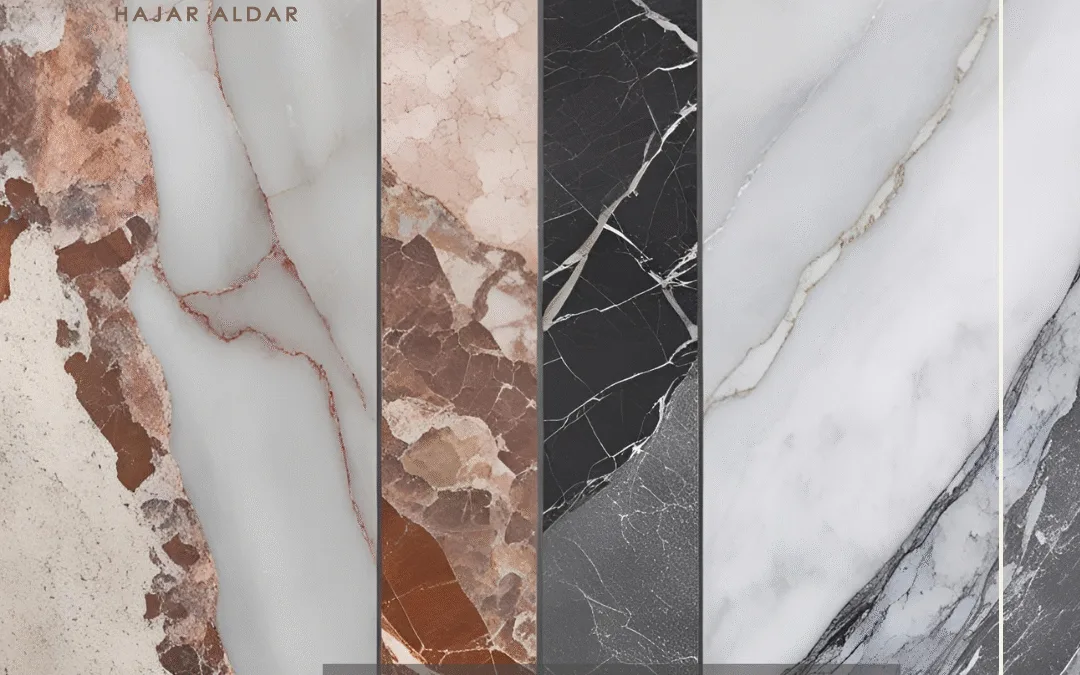Chinese Marble vs. Spanish Marble: A Comprehensive Comparison of Quality, Price, and Usage
Introduction
When it comes to importing marble for construction and interior design projects, a common question arises among architects and developers: Should I choose Chinese or Spanish marble? Both countries are major players in the global marble market, but each has unique characteristics regarding quality, appearance, price, and durability.
In this article, we provide a comprehensive comparison between Chinese and Spanish marble, highlighting differences in appearance, geological composition, pricing, applications, and overall market perception, so you have a clear picture to make an informed and smart decision for your project.
1. Geographic Background and Production
-
Chinese Marble:
China is one of the largest producers and exporters of marble worldwide. Regions like Guangxi, Fujian, and Yunnan host massive quarries producing huge quantities annually. China is known for producing a variety of marbles such as:-
Chinese Crema Marvel marble
-
Guangxi White marble
-
China Grey (dark grey marble)
-
-
Spanish Marble:
Spain is one of Europe’s oldest marble producers, especially in areas like Alicante and Marmoya. Famous Spanish marble types include:-
Original Crema Marfil
-
Rosa Levante (Spanish pink marble)
-
Negro Marquina (the famous Spanish black marble)
-
2. Aesthetics and Overall Appearance
-
Chinese Marble:
Tends to have more uniform color and pattern, preferred by some for modern projects.
Cheaper types may have irregular veins or visible spots.
Some varieties may show hairline cracks if not properly treated. -
Spanish Marble:
Known for its natural beauty and harmonious veins, especially in Crema Marfil and Negro Marquina.
Has a higher degree of visual harmony, making it ideal for upscale spaces.
Veins are often smooth and elegant, resembling artistic paintings.
3. Quality and Durability
-
Chinese Marble:
Quality varies significantly depending on source and manufacturer.
Economical types are less dense, making them more prone to absorption and breakage.
High-quality types from well-known quarries compete with some European marbles in hardness. -
Spanish Marble:
Famous for high quality, color stability, and durability.
Resistant to scratches and stains, especially treated types.
Subject to years of industrial refinement, making it a reliable choice for luxury projects.
4. Price and Cost
-
Chinese Marble:
Considered the most affordable in the global market, attractive for budget-conscious projects.
Shipping costs are relatively low in Asian and Gulf markets.
Available in various grades to suit different budgets. -
Spanish Marble:
Higher cost than Chinese due to manufacturing quality and European labor expenses.
Shipping is relatively costly for distant countries but viewed as a long-term investment.
Preferred in luxury hotels, villas, and upscale exhibitions.
5. Ease of Cutting and Shaping
-
Chinese Marble:
Some types are brittle or highly porous, which can complicate cutting or carving without breakage.
Often used in small pieces or temporary installations. -
Spanish Marble:
More stable during cutting and carving.
Ideal for complex architectural designs such as:-
Round columns
-
Curved edges
-
Engravings and decorative motifs
-
6. Availability and Delivery Speed
-
Chinese Marble:
Widely available and can be supplied in large quantities quickly.
Excels in large-scale projects requiring fast delivery or uniform pieces. -
Spanish Marble:
Less abundant, and some types like Negro Marquina require longer lead times.
Typically ordered in specific quantities for selected high-end projects.
7. Market Perception and General Impression
In design and contracting circles, Chinese marble is seen as:
-
Practical and economical
-
Suitable for mid-budget commercial projects
While Spanish marble is perceived as:
-
Elegant and luxurious
-
Suitable for projects aiming to impress clients or increase property value
8. Best Applications for Each Type
-
Chinese Marble:
Interior floors of commercial complexes or mid-range residential apartments.
Cladding columns or interior walls at a lower cost.
Temporary decorative works and exhibitions. -
Spanish Marble:
Flooring and surfaces of luxury villas.
Wall coverings in reception halls and meeting rooms.
Dining tables and kitchen countertops.
Conclusion
Chinese and Spanish marbles represent two different schools in design and construction. The former is an economical and practical solution suitable for budget-conscious projects, while the latter offers premium quality and European elegance befitting prestigious projects.
The choice between them is not solely based on price but depends on the project type, aesthetic requirements, and the end user’s ability to maintain or replace materials in the long term.
If you are seeking a long-term investment in beauty and durability, Spanish marble may be your best option. However, if you need an attractive and reasonably priced material for large-scale projects, Chinese marble fits the bill.


